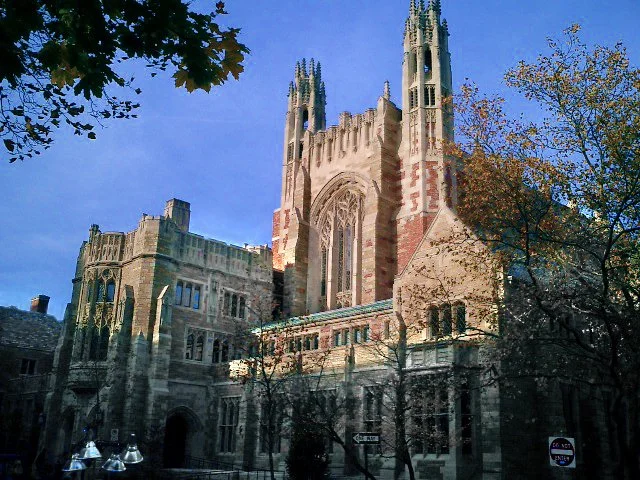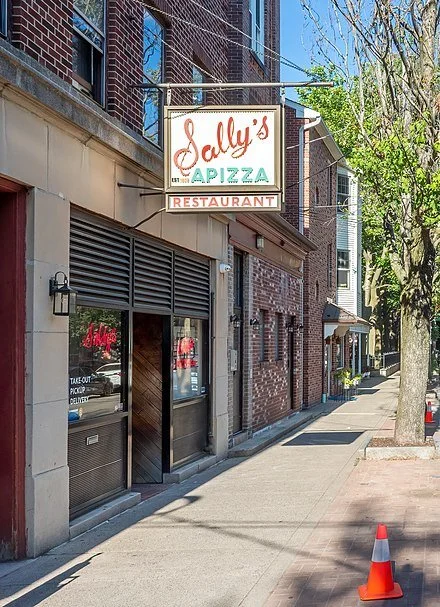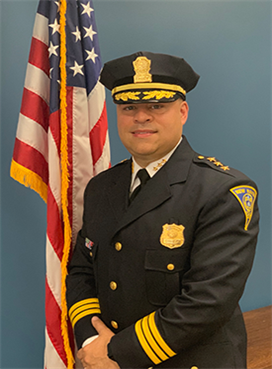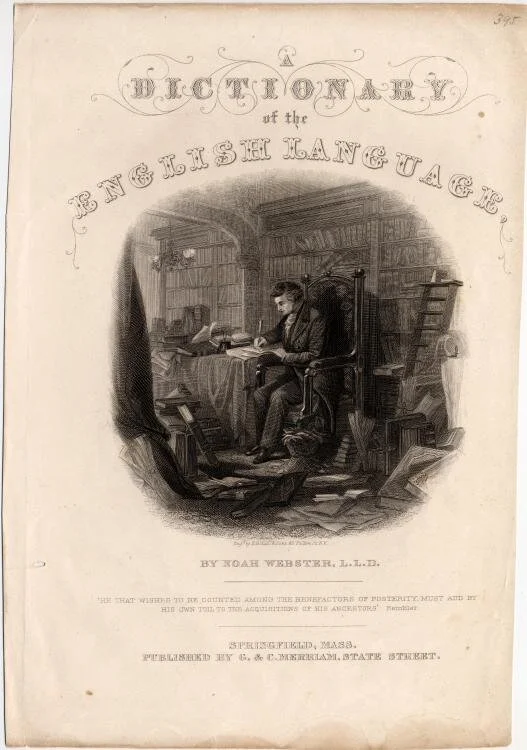
Forget the eclipse
From Lionel Cruet’s video performance “Sun Simulacrums,’’ at the Ely Center of Contemporary Art, New Haven, Conn., April 14-June 2.
The gallery explains:
“The title alludes to the history of human civilizations and the use of the sun as a symbol of god, energy, power, and clarity. Ultimately, the performance challenges viewers to reflect on our role in the climate crisis and the delicate natural world on planet Earth. Other works featured include ‘As far as the eyes can see’ print series, ‘Exercises to understand how to be together (Hand open)’, a series of carbon prints, and ‘Without Horizons’, a large-scale painting on polyethylene canvas. This industrial material is used in high-risk areas and the orange color is indicative of caution and/or danger. Cruet uses these multiple media, which include experimental digital printing processes, performance, and audiovisual installations, to confront issues concerning ecology, geopolitics, and technology. ‘‘
Anxiety in New Haven
“Toward the Forest I ‘‘ (woodcut printed in pink and green), by Edvard Munch, in the show “Munch and Kirchner: Anxiety and Expression’’ opening Feb. 16, at the Yale University Art Gallery, New Haven, Conn.
Activated an alien probe?
From the show “Ken Grimes: The Truth Is Out There,’’ at the Ely Center of Contemporary Art, New Haven, through Jan. 14.
The gallery says:
{The work of New Haven-based} Grimes {born in 1947} “focuses on the question of extraterrestrial life, a topic he has been focused on for most of his life due to a series of coincidences which he interpreted as messages from aliens. Grime’s work has primarily been black and white and so his paintings demand careful consideration yet also play with fantasy, indeed making the viewer question the possibility of life out there.’’
Chris Powell: New Haven welcomes immigration lawbreakers
Before passports: New Haven as it appeared in a 1786 engraving
Illegal immigration might substantially change the ethnic composition of New Haven.
MANCHESTER, Coon.
For 22 years, ever since the Arab terrorist attacks of Sept. 11, 2001, Americans have been urged by various government agencies: "If you see something, say something." Having done just that may cost New Haven's registrar of vital statistics her job.
The registrar, Patricia Clark, had been alerting federal immigration authorities to dozens of marriage licenses involving immigrants -- licenses that struck her as questionable -- just as guidance from the state Public Health Department recommended she do, independent of the national policy of reporting things that don't seem right. When her superiors discovered this in November, they suspended Clark with pay pending investigation.
Why? Because New Haven has declared itself a "sanctuary city" and its policy long has been to nullify federal immigration law.
Mayor Justin Elicker says, "New Haven is a welcoming and safe city for everyone, regardless of background or document status." That is, immigration lawbreakers are welcome in the city. New Haven has gone so far as to issue city identification cards to illegal immigrants to facilitate their remaining in the country illegally.
State government doesn't go quite as far but issues special driver's licenses to illegal immigrants for the same purpose.
The premise of these nullification policies is that the desire of anyone anywhere, whatever his motive, to live in the United States trumps the interest of the United States in remaining a sovereign nation by controlling its borders and judging the admissibility of foreigners and what they intend to do here.
Connecticut and New Haven persist in these policies despite the turmoil lately on display just over the state line in New York City, where, as in other "sanctuary cities," the Biden administration's open-borders policy is bankrupting city government, causing reductions in services to legal residents, driving down the local wage base, driving up housing costs, and worsening the shortage of housing.\
The New Haven registrar is in trouble for being a good citizen and public official in trying to uphold federal law against a city policy that, while dressed up in political correctness and humanitarianism, is essentially treasonous.
Most illegal immigrants mean no harm. But there must be rules to keep immigration orderly and assimilable and ensure that the country remains democratic, secular, and safe from religious and ethnic fanaticism. Letting people enter or remain in the country illegally, unvetted, in the age of international terrorism is crazy.
Some illegal immigrants do mean harm. Some have been deported many times and still sneak back in and commit crimes. The hapless immigration system has many repeat offenders, just like Connecticut's criminal-justice system.
At least six of the 9/11 terrorists violated U.S. immigration law, either by overstaying their visas or falsifying their visa applications. If New Haven and other "sanctuary cities" keep having their way -- indeed, if the Biden administration stays in power -- nothing like that may ever be caught before the damage is done.
xxx
Another contradiction of a premise of Connecticut education policy was broadcast throughout the state the other day but wasn't noticed. The study and advocacy group Education Reform Now CT reported that while Connecticut has racially diversified its public school teaching staff in recent years, the increase in teachers from racial minorities has not matched the increase in students from minority races.
Competition for good minority teachers is intense even as state government can't control the racial composition of its student body. So any increase in minority staff is a credit to school administration. Integration and diversity are important objectives.
But learning is a higher objective than racial integration, and ever since the state Supreme Court's decision in the school-integration case of Sheff v. O'Neill in 1996, Connecticut policy has presumed that minority students learn better in a racially integrated environment. So what's the big deal if teaching staffs are, on average, whiter than their classrooms?
If, as the complaint from Education Reform Now CT suggests, minority kids will learn best in a segregated environment, education in Connecticut has a lot of rethinking to do.
Chris Powell has written about Connecticut government and politics for many years (CPowell@cox.net).
Chris Powell: Conn. cities can’t save themselves
Vanderbilt Hall at Yale
— Photo by GK tramrunner229
MANCHESTER, Conn.
Yale University's police union seems to have thought last week that it could scare up a better contract by distributing to incoming freshmen a handbill suggesting that New Haven is so dangerous that just leaving their rooms in the university cocoon could get them killed. Crime and violence in New Haven are "shockingly high," the handbill said.
Mayor Justin Elicker and other city officials denounced the union's fear mongering, accused the flyer of inaccuracies, and insisted that crime in the city has been coming down. (It depends on the duration measured.)
It waa hard to see how the flyer made a case for a better contract. But most places are far safer than New Haven.
After all, New Haven has a large impoverished population, has shootings almost every day -- some fatal -- and every month the state's prisons send back to the city dozens of troubled former offenders who soon will return to crime.
If New Haven was as safe as those offended by the flyer want people to believe, the city wouldn't have a "shot spotter" system to hasten police response to the constant mayhem, and Yale would not offer security escorts to students around the clock on campus.
But Yalies recognize the university's urban environment and probably have noticed the deteriorating conditions in many cities. Yale's reputation has induced them to take a risk.
So the controversy over the flyer is worthwhile mainly for the rest of Connecticut, whose social contract long has been to accept disintegration in the cities as long as it can be confined. Since increasingly it cannot be confined, maybe it will be addressed seriously only if it keeps spreading.
For try as they might, the cities aren't equipped to save themselves, being so poor and torn between crime victims and perpetrators, most of each group being city residents. Like every victim, every perpetrator is a disaster for his family.
At a recent meeting, Hartford's City Council noted that serious crime in the city is committed disproportionately by repeat offenders the courts have failed to put away for good or even to bring to any resolution at all, leaving many free on bond for long periods and committing more crimes.
Hartford's police say 73 percent of violent criminals in the city have been arrested before and 79 percent of perpetrators in shootings have already been arrested for other gun crimes. As of a few days ago Hartford had suffered 28 murders this year, a rate higher than last year's, and -- hardly noticed -- 67 people had survived shootings in the city.
This should be an outrage beyond Hartford, but it's not, and the city council has no jurisdiction over repeat offenders or crime generally. It can only appropriate for more police.
The Hartford-area chapter of the National Association for the Advancement of Colored People also has noted rising crime in the city. But its idea is only to alert city residents to the many "resources" available to them, like food pantries. That won't tame wild young men.
Running for mayor, Hartford state Sen. John Fonfara comes closest to the underlying problem.
In an interview this month Fonfara implicitly referred to what is usually unmentionable in Connecticut: child neglect at home engendered by the welfare system and social promotion in school. He cited children who "start school unready, or they couldn't read by third grade and get discouraged. They end up in ninth grade but they're at a sixth-grade or fifth-grade level, and they're too old and they quit. … Maybe they don't have support at home in their neighborhood. Maybe some of their friends are involved in a gang, and then it goes from there."
The remedy Fonfara offered was weak: more pre-school. But at least it was relevant, and it's probably too much to expect a candidate for mayor to ask directly where all this child neglect is coming from in a city that is full of it.
Chris Powell has written about Connecticut government and politics for many years (CPowell@cox.net).
Sarah Boden: Dementia can cause financial disasters
Comedian and movie star Robin Williams (1951-2014) in 2011). His widow said he was diagnosed on autopsy with Lewy body dementia.
This article is from a partnership that includes WESA, NPR and KFF Health News.
NEW HAVEN, Conn.
Angela Reynolds knew that her mother’s memory was slipping, but she didn’t realize how bad things had gotten until she started to untangle her mom’s finances: unpaid bills, unusual cash withdrawals, and the discovery that, oddly, the mortgage on the family home had been refinanced at a higher interest rate.Looking back, Reynolds realizes her mother was in the early stages of Alzheimer’s disease: “By the time we caught on, it was too late.”
Reynolds and her mother are among a large group of Americans grappling with the financial consequences of cognitive decline.
A growing body of research shows money problems are a possible warning sign — rather than only a product — of certain neurological disorders. This includes a 2020 study from Johns Hopkins University of more than 81,000 Medicare beneficiaries that found people with Alzheimer’s and related dementias became more likely to miss bill payments up to six years before a formal diagnosis.
The reach of these conditions is enormous. One recent study found nearly 10% of people over age 65 have dementia; more than twice as many are living with mild cognitive impairment..
One weekday in the spring of 2018, Reynolds sat next to her 77-year-old mother, Jonnie Lewis-Thorpe, in a courtroom in downtown New Haven. She listened in discomfort as strangers revealed intimate details of their own finances in a room full of people waiting their turn to come before the judge.
Then it hit her: “Wait a second. We’re going to have to go up there, and someone’s going to be listening to us.”
That’s because the family home was in foreclosure. The daughter hoped that if she explained to the judge that her mother had Alzheimer’s disease, which had caused a series of financial missteps, she could stop the seizure of the property.
Reynolds can’t pinpoint when Alzheimer’s crept into her mother’s life. A widow, Lewis-Thorpe had lived alone for several years and had made arrangements for her aging, including naming Reynolds her power-of-attorney agent. But Reynolds lived a 450-mile drive away from New Haven, in Pittsburgh, and wasn’t there to see her mom’s incremental decline.
It wasn’t until Reynolds began reviewing her mother’s bank statements that she realized Lewis-Thorpe — once a hospital administrator — had long been in the grip of the disease.
Financial problems are a common reason family members bring their loved ones to the office of Robin Hilsabeck, a neuropsychologist at the University of Texas at Austin Dell Medical School who specializes in cognitive issues.
“The brain is really a network, and there are certain parts of the brain that are more involved with certain functions,” said Hilsabeck. “You can have a failure in something like financial abilities for lots of reasons caused by different parts of the brain.”
Some of the reasons are due to normal aging, as Reynolds had assumed about her mother. But when a person’s cognition begins to decline, the problems can grow exponentially.
Dementia’s Causes and Ruthless Impacts
Dementia is a syndrome involving the loss of cognitive abilities: The cause can be one of several neurological illnesses, such as Alzheimer’s or Parkinson’s, or brain damage from a stroke or head injury.
In most cases, an older adult’s dementia is progressive. The first signs are often memory slips and changes in high-level cognitive skills related to organization, impulse control, and the ability to plan — all critical for money management. And because the causes of dementia vary, so do the financial woes it can create, said Hilsabeck.
For example, with Alzheimer’s comes a progressive shrinking of the hippocampus. That’s the catalyst for memory loss that, early in the course of the disease, can cause a person to forget to pay their bills.
Lewy body dementia is marked by fluctuating cognition: A person veers from very sharp to extremely confused, often within short passages of time. Those with frontotemporal dementia can struggle with impulse control and problem-solving, which can lead to large, spontaneous purchases.
And people with vascular dementia often run into issues with planning, processing, and judgment, making them easier to defraud. “They answer the phone, and they talk to the scammers,” said Hilsabeck. “The alarm doesn’t go off in their head that this doesn’t make sense.”
Jonnie Lewis-Thorpe, a widow who now has Alzheimer’s disease, had made arrangements for her aging, including naming daughter Angela Reynolds as her power-of-attorney agent. But Reynolds lived 450 miles away and wasn’t there to see her mom’s incremental decline.
For many people older than 65, mild cognitive impairment, or MCI, can be a precursor to dementia. But even people with MCI who don’t develop dementia are vulnerable.
“Financial decision-making is very challenging cognitively,” said Jason Karlawish, a specialist in geriatrics and memory care at the University of Pennsylvania’s Penn Memory Center. “If you have even mild cognitive impairment, you can make mistakes with finances, even though you’re otherwise doing generally OK in your daily life.”
Some mistakes are irreversible. Despite Reynolds’ best efforts on behalf of her mother, the bank foreclosed on the family home in the fall of 2018.
Property records show that Lewis-Thorpe and her husband bought the two-bedroom Cape Cod for $20,000 in 1966. Theirs was one of the first Black families in their New Haven neighborhood. Lewis-Thorpe had planned to pass this piece of generational wealth on to her daughters.
Instead, U.S. Bank now owns the property. A 2021 tax assessment lists its value as $203,900.
Financial Protections Slow to Come
Though she can’t prove it, Reynolds suspects that someone had been financially exploiting her mom. At the same time, she feels guilty for what happened to Lewis-Thorpe, who now lives with her: “There’s always that part of me that’s going to say, ‘At what point did it turn, where I could have had a different outcome?'”
Karlawish often sees patients who are navigating financial disasters. What he doesn’t see are changes in banking practices or regulations that would mitigate the risks that come with aging and dementia.
“A thoughtful country would begin to say we’ve got to come up with the regulatory structures and business models that can work for all,” he said, “not just for the 30-year-old.”
But the risk-averse financial industry is hesitant to act — partly out of fear of getting sued by clients.
2018’s Senior Safe Act , the most recent major federal legislation to address elder wealth management, attempts to address this reticence. It gives immunity to financial institutions in civil and administrative proceedings stemming from employees reporting possible exploitation of a senior — provided the bank or investment firm has trained its staff to identify exploitative activity.
It’s a lackluster law, said Naomi Karp, an expert on aging and elder finances who spent eight years as a senior analyst at the Consumer Financial Protection Bureau’s Office for Older Americans. That’s because the act makes training staff optional, and it lacks government oversight. “There’s no federal agency that’s charged with covering it or setting standards for what that training has to look like,” Karp said. “There’s nothing in the statute about that.”
One corner of the financial industry that has made modest progress is the brokerage sector, which concerns the buying and selling of securities, such as stocks and bonds. Since 2018, the Financial Industry Regulatory Authority — a nongovernmental organization that writes and enforces rules for brokerage firms — has required agents to make a reasonable effort to get clients to name a “trusted contact.”
A trusted contact is similar to the emergency contact health care providers request. They’re notified by a financial institution of concerning activity on a client’s account, then receive a basic explanation of the situation. Ron Long, a former head of Aging Client Services at Wells Fargo, gave the hypothetical of someone whose banking activity suddenly shows regular, unusual transfers to someone in Belarus. A trusted emergency contact could then be notified of that concerning activity.
But the trusted contact has no authority. The hope is that, once notified, the named relative or friend will talk to the account holder and prevent further harm. It’s a start, but a small one. The low-stakes effort is limited to the brokerage side of operations at Wells Fargo and most other large institutions. The same protection is not extended to clients’ credit card, checking, or savings accounts.
Financial Industry Reluctant to Help
When she was at the Consumer Financial Protection Bureau, Karp and her colleagues put out a set of recommendations for companies to better protect the wealth of seniors. The 2016 report included proposals on employee training and changes to fraud detection systems to better detect warning signs, such as atypical ATM use and the addition of a new owner’s name to an existing checking account. “We would have meetings repeatedly with some of the largest banks, and they gave a lot of lip service to these issues,” Karp said. “Change is very, very slow.”
Karp has seen some smaller community banks and credit unions take proactive steps to protect older customers — such as instituting comprehensive staff training and improvements to fraud detection software. But there’s a hesitancy throughout the industry to act more decisively, which seems to stem in part from fears about liability, she said. Banks are concerned they might get sued — or at least lose business — if they intervene when no financial abuse has occurred, or a customer’s transactions were benign.
Policy solutions that address financial vulnerability also present logistical challenges. Expanding something as straightforward as use of trusted contacts isn’t like flipping a light switch, said Long, the former Wells Fargo executive: “You have to solve all the technology issues: Where do you house it? How do you house it? How do you engage the customer to even consider it?”
Still, a trusted contact might have alerted Reynolds much sooner that her mom was developing dementia and needed help.
“I fully believe that they noticed signs,” Reynolds said of her mother’s bank. “There are many withdrawals that came out of her account where we can’t account for the money. … Like, I can see the withdrawals. I can see the bills not getting paid. So where did the money go?”
Sarah Boden (@Sarah_Boden) is a WESA reporter.
#dementia
Chris Powell: Program for ex-cons in New Haven needs to include work as well as welfare
They could help clean up this.
New Haven from the south.
— Photo by Emilie Foyer
MANCHESTER, Conn.,
Being the source of all sorts of politically correct nuttiness even as its violent crime is atrocious and its schools don't work (because few of their students have competent parents), New Haven may be criticized for its new experiment with released prisoners. The city is awarding 20 of them a guaranteed income of $500 a month for a year to help them re-establish themselves on the right side of the law.
But the money is coming from a philanthropic grant, not from government, and only a big detail of the program is amiss, not the objective. Indeed, the objective is compelling. The program should be adjusted and implemented by state government throughout Connecticut.
With its largely impoverished, uneducated, unskilled, fatherless and welfare-dependent population, New Haven is a hub of crime, as Connecticut's other cities are. Every year the state prison system releases about 900 offenders back to the city as they complete their sentences. On average within three years about half of them are convicted of more crimes and sent back to prison. The true failure of rehabilitation in criminal justice is worse than that, since many released offenders commit more crimes but aren't caught.
That this "recidivism" has been so bad for so long does not make it any less of a disaster and excuse government's failure to do much about it. But this disaster is inevitable when uneducated, unskilled and demoralized men are returned to society without financial resources, a job, housing and medical insurance even as they carry the heavy handicap of a criminal record.
What's faulty about the experiment in New Haven is that the guaranteed income for the former prisoners is not linked to a guaranteed job, medical insurance and rudimentary housing. It's welfare when it should be work.
The Correction Department should be funded to provide much more job training to prisoners within two or three years of their likely release. But government should be able to find work even for the uneducated and unskilled.
For starters, Connecticut's roadsides, parks, railroad lines and other public areas are full of litter strewn about by slobs. A few dozen released prisoners could clean up a whole city in just a month and might feel pretty good about it if they were being paid, appreciated, and free of the fear of having no housing and medical insurance.
Connecticut's manufacturers are struggling to fill thousands of skilled positions and might provide internships and job-training to former prisoners who showed an interest. Hospitals might too. Churches, especially those in the cities, surely would assist a campaign to employ former prisoners.
With its guaranteed -income program New Haven has had its pick of the seemingly most rehabilitated and motivated former prisoners. Reintegrating other former prisoners will be much harder, and the public's reaction to former prisoners working visibly in public places, sometimes near children and the elderly, might not always be welcoming. So government will have to explain patiently why society must help former prisoners make something good of themselves. Many people will understand.
Of course there would be failures in such a program -- but not as many as there already are with released prisoners. Indeed, compared to the present disaster, the success of such a program would be virtually certain.
Then maybe state government could turn its attention to getting rid of its policies and practices that have turned the cities into poverty factories.
xxx
BRIDGEPORT FAILS AGAIN: Why has state government yet to see much progress from its longstanding policy of throwing ever-more money at Connecticut's impoverished cities and especially their schools?
There may have been a hint the other day from Bridgeport, where videographer Steve Ronin posted on the Internet a long video taken during his recent tour of the city's former Harding High School. Though the school was closed five years ago, it remains packed with valuable furnishings and equipment as if it is still operating.
The video shocked city officials. They thought that the school board had relocated the furnishings and equipment for continued use. But what should have been obvious wasn't done.
What's more shocking is that state officials still seem to consider Bridgeport capable of self-government.
Chris Powell is a columnist for the Journal Inquirer in Manchester, Connecticut (CPowell@JournalInquirer.com).
Felice Duffy: Forward or backward with new Title IX regs?
— Photo by Sichow
From The New England Journal of Higher Education, a service of The New England Board of Higher Education (nebhe.org)
NEW HAVEN, Conn.
On the 50th anniversary of the enactment of Title IX, the U.S. Department of Education released proposed new regulations for Title IX policies. For the most part, these new regulations reverse regulatory changes made during the Trump administration.
The Biden administration insists the new regs will “restore crucial protections” that had been “weakened.” Commenters have their own opinion on the efficacy of the proposed regulations, with over 235,000 formal comments filed during the 60-day comment period.
So, do the proposed regulations represent a step forward or backward?
Overview of changes
The deceptively simple words in Title IX of the Education Amendments Act of 1972 have been augmented by numerous regulations and judicial interpretations over the decades. While the aim is to protect students from sex-based discrimination, many worry that the regulatory efforts to right or prevent wrongs go too far and infringe on the due process rights of those accused of Title IX violations.
During the Trump administration, the Office for Civil Rights spent nearly 18 months reviewing less than 125,000 public comments before issuing new final regulations that resulted in significant changes. With almost 90% more comments to review this time around, it will be interesting to see how long it takes the department to issue final rules about key issues they are considering, such as:
How colleges are required to investigate reports of sexual assault.
Whether colleges are required to hold live hearings before issuing decisions.
Protections for LGBTQIA+ students.
The definition of sexual harassment.
While some commenters object that the proposed rule changes go too far in one direction, others insist they do not go far enough.
Live hearings and cross-examination
One of the most significant controversies regarding the proposed regulations centers on the types of proceedings colleges must hold to hear Title IX complaints. The new regulations allow schools to hold separate private meetings with complainants and respondents instead of live hearings with the opportunity for cross-examinations. Supporters of the change assert that the disciplinary hearings required under current rules are too much like adversarial courtroom proceedings. Many say that allowing colleges to establish less formal, non-confrontational processes will save money and encourage victims to proceed without fear of repercussions.
However, other commenters expressed concerns that eliminating live hearings and allowing colleges to use the same body to investigate and judge the validity of complaints violates the due process rights of students accused of violations.
Burden of proof in sex discrimination and misconduct
Controversy continues about how much a complainant must prove to win a case alleging that they have been subjected to sexual discrimination, harassment or assault. The proposed rules would generally establish a “preponderance of evidence” standard in most but not all cases, so a student need only to prove that it was “more likely than not” that the discrimination occurred. The current rules provide a choice between the preponderance of evidence and clear and convincing evidence standards.
Critics of the change say the clear and convincing standard is necessary to protect the respondent’s rights, and they point out that it is still less than the “beyond a reasonable doubt” standard used in criminal cases.
Gender identity and sexual orientation
The proposed regulations expand the anti-discrimination protections of Title IX to include gender identity and sexual orientation when it comes to college programs or activities, except athletics. The department has delayed ruling on the highly controversial issues related to participation in sports programs.
Even without addressing athletics, the expansion of protections generated numerous forceful comments. Those in favor assert that the new rules will improve the safety and wellbeing of LGBTQIA+ students and resolve equality issues that are currently being addressed on a costly case-by-case basis in the courts. Opponents of the expansion allege that by requiring schools to allow participation in programs based on gender identity, the new regulations actually violate the Title IX mission of providing equal access to education benefits on the basis of sex. They also argue that the proposed changes exceed the department’s statutory authority and would chill free speech rights on campus. For example, the definition of sexual harassment will be expanded such that students could be investigated for not using certain pronouns or using incorrect pronouns that do not correctly reflect the gender with which a person identifies.
Are we moving forward or backward?
While the new regulations are not yet final, the final regs are expected to track closely with the proposed version. Whether you are a complainant or a respondent regarding any number of explicit proposed provisions in the regulations, each side would argue the provision is either moving toward a brighter future or repressive past—any provision that makes it more difficult to file a complaint (such as requiring a formal complaint under the current regs) makes it harder for complainants (repressive past) and easier for respondents (brighter future); and keeping the standard at the preponderance of evidence versus raising it to clear and convincing, is easier for complainants (repressive past) and more difficult for respondents (brighter future).
The one certainty is that when schools implement the new regulations, those who are unhappy with the results will turn to the courts for clarification and possible nullification. It will be interesting to see how the courts respond.
Felice Duffy is a Title IX lawyer with Duffy Law, based in New Haven, Conn., and a former federal prosecutor.
Chris Powell: Education disaster begins with parental neglect
Possible ways for such adverse childhood experiences as abuse and neglect to influence well-being through the lifespan, according to the Centers for Disease Control and Prevention.
MANCHESTER, Conn.
August's Titanic Deck Chairs Rearrangement Award seems likely to be won by the Education Committee of New Haven's Board of Alders (aka the city council), which, according to the New Haven Independent, in the face of catastrophic student performance data, spent much of its last meeting debating reading-instruction techniques even as 58 percent of the city's public school students are classified as chronically absent.
At least the meeting produced admissions from Supt. Ilene Tracy that for two years student mental health and "social-emotional learning" have displaced academic instruction and that student behavior is now "atrocious."
So it may not be surprising that the shortage of teachers, a national problem, is especially bad in New Haven's schools, which have about 300 unfilled positions amid a steady drain of teachers to school systems where salaries and students are better.
Of course while their political correctness doesn't help, New Haven's educators are mainly just playing the hand they have been dealt. They can't choose their students or the parents of their students.
But the disaster of education in New Haven and Connecticut's other cities has continued long enough that the Board of Alders, city legislators (including the influential New Haven Democrat Martin M. Looney, president pro tem of the state Senate), the state education bureaucracy, and Governor Lamont should have noticed by now that it is entirely a matter of demographics, the perpetual poverty arising from child neglect at home.
Instead these leaders keep clamoring for more programs to remediate the neglect rather than to address its cause and thereby prevent it -- and these programs keep failing spectacularly and expensively.
It is all an old of story of public education, documented in 1966 by the sociologist James S. Coleman, of Johns Hopkins University, who was assigned by the U.S. Office of Education to interpret the mass of school data collected at the direction of the Civil Rights Act of 1964. Coleman's most important conclusion was recounted this month by the writer Ian V. Rowe in National Review magazine. Coleman wrote:
“One implication stands out above all: That schools bring little influence to bear on a child's achievement that is independent of his background and general social context; and that this very lack of an independent effect means that the inequalities imposed on children by their home, neighborhood, and peer environment are carried along to become the inequalities with which they confront adult life at the end of school.”
Coleman did not conclude that schools themselves don't matter at all. To the contrary, he found that disadvantaged children perform better in schools with better students, where standards are higher and peers set better examples. But that too was a matter of getting the children away from the bad influences of their home life.
In this respect the Coleman report echoed the findings of the report a year earlier by another sociologist, Daniel Patrick Moynihan, who was then assistant U.S. labor secretary and who became a great U.S. senator. Moynihan blamed severe poverty and urban chaos on the breakdown of the family.
Indeed, the chronic absenteeism in New Haven's and other city school systems practically screams neglect of children by their parents, without even a whisper about teaching techniques.
If simply acknowledging the real problem in urban education in Connecticut is hard, it is harder still to imagine how politics would allow it to be addressed.
City officials and legislators cannot examine the causes of child neglect and educational failure without indicting their own constituents.
State officials can't examine the causes without indicting themselves for a welfare system that destroys the family while putting thousands of unionized and politically active "helpers" on the government payroll.
Educators, also numerous, unionized, and politically active, can't do it without calling more attention to their irrelevance and impugning their employment.
Academics like Coleman and Moynihan did it and some keep doing it, and journalism can call attention to their work. But if the trend toward illiteracy and ignorance keeps accelerating, there will be no one left to read it, much less act on it.
Chris Powell is a columnist for the Journal Inquirer, in Manchester. He can be reached at CPowell@JournalInquirer.com.
Chris Powell: New Haven’s silly attempt at foreign policy; hysteria about alleged ‘white-supremacist’ threat
New Haven’s very unusual City Hall, designed by Henry Austin in a Victorian Gothic style, was built in 1861.
— Photo by Sage Ross
MANCHESTER, Conn.
Recently New Haven's big news has included the usual shootings, the continued inability of the city's students to read at anything close to grade level despite their school system's ever-increasing budgets, controversy over the selection of a new police chief, and, of course, the paralyzing injury suffered by a man in police custody because the city never got around to installing seat belts in a van used to convey prisoners. (Elsewhere in the United States seat belts have been standard equipment in motor vehicles for more than 50 years.)
But last week New Haven's Board of Alders -- what less pretentious jurisdictions would call the city council -- took another break from hard local reality. The board accepted the recommendation of the city's Peace Commission and approved a resolution urging President Biden to end the U.S. economic embargo of Cuba.
There were no signs that the State Department, the United Nations and the Cuban government were hanging on the resolution's fate. There were signs that city residents were concerned about the shootings, education failure and the police department.
The objective of New Haven's Peace Commission is -- really -- to protect the city against nuclear war. In that respect maybe the commission can claim to be doing a great job.
Peace on the city's own streets has been much more difficult to achieve, and despite the political correctness and self-righteousness that characterize the city's intelligentsia, even a few city residents might be wondering why these days anyone in city government has time to worry about Cuba.
The P.C. distractions in New Haven city government go well beyond Cuba. Two years ago the city established a Climate Emergency Mobilization Task Force. The emergency was so urgent that the task force wasn't appointed for more than a year after the Board of Alders authorized it. The task force's objective is "to end community-wide greenhouse gas emissions" by 2031 and figure out how "to safely draw down carbon from the atmosphere."
And why not? Those problems, challenging as they seem, may be easier to solve than making city streets safe, the schools effective, and city government more competent generally. Since the latter problems are so difficult, addressing them usually fails, so addressing them won't make the intelligentsia feel as good about itself as devotion to Cuba, climate change, and facilitating illegal immigration, New Haven having declared itself a "sanctuary city."
Indeed, New Haven's political correctness may be a big part of what makes the city's problems so intractable, shielding city government against the possibility of criticism from local news organizations, which embrace city government's leftward tilt despite its chronic deficiencies.
Really, how fair is it to criticize city government over the basics when it's trying so hard with Cuba, climate change, and nullifying immigration law?
But if its news organizations won't do the job, who will help New Haven residents understand that political correctness is no substitute for public administration?
xxx
Connecticut's news organizations outside New Haven aren't always much help either. Despite the constant mayhem in New Haven and the state's other cities, news organizations lately are paying more attention to what is being called a sharp rise in distribution of "white supremacist" flyers, which recently have been found in 15 towns.
But the flyers don't accomplish anything beyond stoking more leftist hysteria about the "right wing," which, without evidence, is accused of being the source of the flyers, though the flyers are distributed anonymously and don't provide accurate attribution. Police are investigating but even if a source is discovered, nothing could be done unless the flyers directly threaten people. So far they don't.
Connecticut has had some bloody crimes while the flyers have been distributed but the flyers weren't the perpetrators. Thanks to news organizations, the flyers have just distracted from the worsening mayhem.
For all anybody knows, the flyers could be distributed by some left-wing group as a false-flag operation. In any case they might not be distributed as much if news organizations weren't so eager to publicize them.
Chris Powell is a columnist for the Journal Inquirer, in Manchester.
Chris Powell: Amidst the failure to lift the poor, cities need gentrification
Approaching Wooster Square Park, in New Haven. The Wooster Street archway is decorated with a cherry blossom tree, a symbol of New Haven. It’s a reminder of the pleasure and advantages of city life, notes Chris Powell.
MANCHESTER, Conn.
Especially in Connecticut, elected officials claim credit for trying to solve the problems they themselves created. It happened again recently with legislation proposed in the General Assembly to require larger municipalities to create "fair rent" commissions with power to cancel or reduce residential rent increases.
Yes, along with housing prices generally, rents have been increasing dramatically since inflation exploded. By some calculations housing has never been more expensive relative to incomes. But the legislation effectively blamed landlords when the rent increases are largely the result of government's own policies.
Impairing the ability of landlords to make money would only discourage boosting the supply of rental housing.
Connecticut policy long has allowed municipal zoning regulations to stunt the housing supply. Like rent control, restrictive zoning subverts the market. If housing was easier to build, supply would grow and prices fall.
A recent state law aims to diminish the exclusivity of suburban zoning, but it is yet to have much effect even as it is prompting anger in some towns.
The housing shortage has bigger underlying problems.
First, people want to have children but don't want to ensure that housing is available nearby for their kids when they start out on their own. Of course, peace and quiet are great but many people want government to provide peace and quiet at the expense of people who don't yet have adequate housing -- to provide peace and quiet through restrictive zoning.
And second, people justifiably want good neighbors. Quite apart from racial and ethnic prejudices, which are fading, good neighbors means that people who will behave decently, pay more in taxes than they consume in government services, and not manifest the pathologies associated with the never-ending poverty and depravity of the cities.
Connecticut's zoning-reform legislation vindicates these concerns insofar as it calls itself "fair share" legislation, confirming that new residents are a burden. Once or twice even the mayors of Hartford and New Haven have been candid about wanting to disperse their poorest residents to the suburbs. Indeed, poverty is no virtue, for with the poor come crime, dependence, and neglected children who wreck schools.
Suburbs sneer at this while city mayors have to cope with it. If government's welfare, education and urban policies were not chronic failures, suburbs might be more welcoming to new residents and to the housing construction Connecticut needs so badly.
All state government has to do is stop manufacturing poverty.
But maybe with the housing legislation Connecticut has been putting too much focus on suburbs. Lately the glorious cherry blossoms in Wooster Square Park, in New Haven, have provided a spectacular reminder of the advantages and potential of city life.
After all, the main problem with cities today is not infrastructure as much as many of the people who live there. A city with "mixed-use development" has great virtues -- commerce, industry, hospitals and medical offices, various kinds of residences, markets, restaurants, churches, theaters, and parks, all within walking distance of each other, with shops and housing often in the same buildings. In such places it is possible not just to live without a car but to be glad to be free of its expense.
Thanks in large part to Yale University, downtown New Haven somewhat sustains this way of life. Downtown Hartford lost it 60 years ago with horribly misguided urban redevelopment. But under the same mayors who would like to export their poor, both cities are waking up, striving to increase middle-class housing downtown or nearby.
Sometimes this effort is scorned as "gentrification," but gentrification is exactly what the cities need. Why is Stamford booming while Bridgeport -- only 23 miles east on the same railroad, highways and coast, with a better harbor and an airport -- sinking in decrepitude and struggling to just keep the lights on downtown?
Maybe it's because, being closer to New York City, housing in Stamford long has tended to be more expensive and so being poor there wasn't as easy as it was and remains in Bridgeport.
The poor can't be deported. So why can't Connecticut ever raise them to the middle class? Why is the decades-long failure to lift them never even officially acknowledged?
Chris Powell is a columnist for the Journal Inquirer, in Manchester.
Kyle Sebastian Vitale: The campus courage crisis
The Yale Law School building, erected in 1931. Modeled after the English Inns of Court, the law building is at the heart of Yale's campus and contains a law library, a dining hall and a courtyard.
— Photo by Shmitra
Via The New England Journal of Higher Education, a service of The New England Journal of Higher Education (nebhe.org)
Courage has become a superlative attribute in our age. Health-care workers courageously work on the frontlines of COVID-19. Ukrainian President Zelensky exhibits courage against foes of democracy. These figures risk their personal security for the benefit of others and higher ideals. Higher education, too, is newly interested in courage as a centering ideal. That’s good: We need more courage on campus these days.
What we have instead is a mistaken notion of courage. Take recent events at Yale Law School. Student protesters disrupted a bi-partisan Federalist Society panel about religious freedoms, featuring the American Humanist Association and Alliance Defending Freedom (ADF). Students quietly joined the event before ambushing it, heckling the speakers Monica Miller and Kristen Waggoner over ADF’s and the Federalist Society’s conservative positions. As the video conveys, students acted under an assumed banner of courageous support for those identifying as transsexual.
Undoubtedly, this took nerve, and I am slow to fault students who intended to act in good faith. Yet is this courage? Most will agree that courage, while complex to define, carries a quality of personal sacrifice. Clemson University’s Cynthia Pury, speaking with the Berkeley Greater Good Science Center, helpfully qualifies courage as something requiring “a noble goal, personal risk and choice.” That seems to get at our common notion of courage as something that takes both strength and sacrifice.
The Yale event featured little personal risk. Students hid behind signs and cries that freedom of speech justified their actions. Missing was the vulnerability of actual discussion, and with it, the risk of one’s views undergoing scrutiny. This was about abolishing discomfiting views, not the small sacrifice of listening to others. Those who disagreed with speakers Miller or Waggoner but were prepared to listen, showed far more courage.
Similarly disruptive events occur across college campuses elsewhere, and they look the same: group settings, much shouting and swift departure by those protesting. Student hecklers rarely face up to the reality that they may not be entirely right or that their “enemy” may not be entirely wrong, both of which involve personal risk to one’s ideals. This is anger, but it is not courage. How do we counter this instinct?
By amplifying better models of courage. Emma Camp is one. Camp wrote recently about the culture of self-censorship among students at the University of Virginia. Students like Camp feel the relentless pressure to tow the ideological line, lest they find themselves on the outs with peers. Her essay is a model of courage, energized by higher ideals, open about her beliefs and honest about her mistakes. She knew the piece would receive a mixed response, and boy was she right, yet she met criticism with poise and interest.
If there are more students like Emma Camp out there, campus culture certainly doesn’t help us find them. A recent survey from Heterodox Academy reveals that 63 percent of students feel their campus climate prevents them from expressing their beliefs on various subjects, for fear of criticism or retribution from classmates and teachers. Courage’s unique ingredient—personal risk—is uniquely threatened on campus.
In response, higher education must create campuses rooted in trust and courage—trust that we are willing to hear each other out and courage to risk our assumptions and ideas. Students are certainly not blameless here, giving in to groupthink and pressuring one another into empty activism. Yet, they are also starved for models of courageous engagement with the uncomfortable. Numerous cases record campus administrators caving to students who demand more than they offer. Faculty too are often too quick to apologize when students perceive a racist or sexist comment, rather than respond with their intentions and pedagogical beliefs.
Courage is not screaming against the things that indispose us. Courage is sharing beliefs with confidence, authenticity and flexibility. It improves campus culture by contributing more perspectives and welcoming more views in the search for truth. It also requires much: faculty building classrooms that cultivate sincere interpersonal interest, administrators modeling charitableness and tenacity, and students choosing to listen and risk putting their beliefs under the microscope.
That same Heterodox Academy survey and other available research reveal that college students are more willing to share their beliefs in high-quality interactions with people they know. Our students are quietly ready to be more courageous on campus. Let’s support the ideals and the designs that help them get there.
Kyle Sebastian Vitale (@kylesebvitale) is director of programs at Heterodox Academy, a nonpartisan collaborative of more than 5,300 professors, educators, campus administrators, staff and students committed to enhancing the quality of research and education by promoting viewpoint diversity in higher education. He writes about higher education and has taught literature and pedagogy for over a decade at Yale University, the University of New Haven, the University of Delaware and Temple University.
‘Feelings that art can restore’
“Multiple Phantasms” (encaustic wax, Fiber Clay, slinky), by Cheshire, Conn.-based artist Ruth Sack.
She says:
“Phantasmagoria: A bizarre or fantastic combination, collection, or assemblage.
“I slid down the tongue of a giant monster and emerged exultant. The monster was a play structure by Niki de Sainte Phalle called ‘Golem.’ I have since created my own whimsical artworks in order to spark that same thrill. The sculptures in this exhibit are inspired by Saint Phalle in pursuit of that excitement. I am as thrilled moving through a gigantic sculpture as I am when making a piece of art that delights me. These are the sort of feelings that have been quashed by the pandemic. These are the sort of feelings that art can restore.
“These works are part of a series called ‘Phantasmagoria.’ They have evolved from earlier coiled sculptures that evoked letterforms and primitive symbols. With the addition of organic shapes and detailed patterns, these pieces started to resemble lifelike characters. Each sculpture appears to be transitioning from an abstract form into an animated figure. This metamorphosis can summon thoughts of mythology and contemporary tales.’’
In Cheshire, from left to right: Cheshire Town Hall, Congregational Church, Historical Society, and Civil War memorial. The town also has a large bomb shelter under an AT&T tower. Given Russian mass murderer Putin’s tendencies, it may come in handy.
Roaring Brook Falls in Cheshire.
Loco in loco
Storefront on Wooster Street in New Haven. New Haven is well known for its pizza but Yale students have been ordered not to eat in the city’s restaurants at least until Feb. 7 in an example of stringent medical theater.
Adapted from Robert Whitcomb’s “Digital Diary,’’ in GoLocal24.com
This note from a Connecticut boarding school is a display of that fragmenting thing, for a multiethnic semi-democracy, of excessive identity politics:
“As we continue the important dialogue
among Taft's BIPOC {Black and Indigenous People of Color} alumni and students,
we hope you will join us virtually
Thursday, January 13, 7pm EST
This event includes
Taft's Pan-Asian Affinity Group,
Mosaics (Black/LatinX Female Affinity Group),
Shades (Black/LatinX Male Affinity Group),
and Somos (LatX Affinity Group)’’
Education should be almost entirely focused on people as individuals, not as members of groups.
In other academic craziness, Yale has told students, whom they have placed under a quarantine until Feb. 7, that they:
“{M}ay not visit New Haven businesses or eat at local restaurants (even outdoors) except for curbside pickup.”
Does the university plan to send the campus cops around the city to arrest resisters at their tables?\
Then we have Princeton University’s order:
“Beginning January 8 through mid-February, all undergraduate students who have returned to campus will not be permitted to travel outside of Mercer County or Plainsboro Township for personal reasons, except in extraordinary circumstances. … We’ll revisit and, if possible, revise this travel restriction by February 15.”
Will there be roadblocks at the county line?
This is ridiculous medical theater and lunatic in loco parentis that will have little or no effect on the spread of COVID, which is pretty much everywhere now anyway.
But it’s certainly a good way to create right-wingers.
Chris Powell: Mask police do their thing as killers stay free; Spiffed up Union Station?
A Tyrannosaurus Rex sculpture outside Boston’s Museum of Science wearing a face mask and a Band-Aid indicating a COVID-19 vaccine has been administered.
MANCHESTER, Conn.
Poor New Haven. Its police department has been unable to make arrests in 35 of the 45 murders committed in the city in the last two years, a failure rate of 78 percent,.
Despite $111 million in federal emergency assistance, New Haven's school system is running a deficit again, constantly losing teachers to higher-paying school systems and unable to provide drinking water to students, having shut down the water fountains in school hallways in fear that the fountains contribute to the virus epidemic. While water bottle-filling stations have been ordered, they may not be installed before the next school year begins.
But elsewhere Mayor Justin Elicker's administration is on a tear of efficiency. Last week the city launched a sweep of local businesses to check compliance with the mayor's order that everyone indoors in commercial facilities must wear a face mask.
Face masks are doubtful mechanisms of curtailing the virus, but if everyone is required to wear a mask indoors, at least medical theater can make city government seem to be taking charge, distracting from its other failures. A problem will arise only if people start comparing risks.
For even before the arrival of the latest variant of the virus, Omicron, 99.8 percent of people infected recovered, and while Omicron is believed to be more communicable, in most cases it also appears to be far less severe, no worse than a cold and less deadly than, say, a bullet to the brain and the other causes of the criminal deaths New Haven can't solve.
But all Connecticut, not just New Haven, should be questioning government's priorities in the face of the city's many unsolved murders.
A few days ago Windsor's police department announced that after eight months of investigation, it remains unable to determine who, back in April, hung ropes resembling nooses at the Amazon warehouse under construction in that town. The ropes injured no one, but many people were eager to claim that they had felt threatened.
A Windsor police statement described the extensive efforts taken to solve the supposed crime: "Numerous interviews of Amazon construction site personnel were conducted, including steel workers, electricians, safety and security workers, and administrative personnel, as well as others not directly involved in the construction site. Investigators reviewed personnel records of multiple employees, camera footage, and shift logs." Some people were given polygraph tests.
Assisting the Windsor police were the FBI, state police, and Hartford state's attorney's office.
What if such federal and regional resources had been poured instead into investigating the 35 unsolved murders in New Haven? Might one or two of them have been solved by now?
Maybe not, but at least Connecticut would have been spared eight months of expensive political correctness.
Union Station in New Haven.
The still gorgeous interior of Union Station, a major stop and train-changing center for Amtrak and Metro North.
Last week there was also a hopeful development in New Haven. After years of failure to act on the huge potential of historic Union Station, the busiest and grandest railroad station in Connecticut, city government and the state Transportation Department signed a development agreement.
State government will lease the station and its adjacent property to the city for 35 years, with a possible extension of 20 years, so the city might improve it with much-needed parking, a bus depot, restaurants and retail shops, offices, a beautiful plaza, frequent shuttle bus service to Tweed New Haven Airport, and whatever else might befit this gateway to Connecticut and link it to downtown New Haven a half mile away -- if enough free money ever can be found from the state and federal governments, since the city never will have any of its own to spare.
It's a compelling idea but as the city's police and school disasters suggest, there's little reason to believe that New Haven is capable of executing it any more than Hartford has been capable of managing its own big development projects, which is why state government has put a state agency in charge of them. The same should have been done for the Union Station project in New Haven.
So it will be no surprise if the project takes 35 years just to get started, only to end up with marijuana dispensaries, methadone and abortion clinics, gambling parlors, still more housing for people who can't support themselves -- and still not enough parking.-
Chris Powell is a columnist for the Journal Inquirer, in Manchester.
Don Pesci: The body count in New Haven
New Haven from the south, with The Hill in the foreground. East Rock is visible in the background
— Photo by Emilie Foyer
VERNON, Conn.
Paul Bass of the New Haven Independent is keeping a body count.
From January to March alone, the publication notes, “Alfreda Youmans, 50, and Jeffrey Dotson, 42, were found dead by the police inside a Winthrop Avenue apartment, Jorge Osorio-Caballero, 32, was shot and killed in Fair Haven, Marquis Winfrey, 31, was shot and killed in Newhallville, and Joseph Vincent Mattei, 28, was shot and killed in the Hill. Someone shot Kevin Jiang, 26, to death in Goatville on Feb. 6. Angel Rodriguez, 21, was shot to death in Fair Haven in mid-February, his body dumped by the Mill River in East Rock. Dwaneia Alexandria Turner, 28, was shot to death in the Hill on March 16 during an argument with two other women.”
And the year’s total body count so far for the city that has given us Yale, two nationwide recognized pizza houses, the inimitable Roger Sherman, and William Celentano, a funeral director and the first Italian-American mayor of New Haven -- indeed, the last Republican mayor elected in New Haven 68 years ago – is 21.
“There have been 21 homicides in New Haven this year,” NBC Connecticut reports. “Twenty murders were reported citywide in 2020, according to statistics from the New Haven Police Department” – and we have about 3 months left to close out the year.”
It promises to be a record year, not only for new Haven but for all major cities in Connecticut.
The New Haven Independent, whose reporting on murders in New Haven has been more granular than some might wish, tells us the latest shooting victim is Trequon Lawrence, 27 years old, employed by Yale New Haven Hospital, and a new home owner.
“I purchased my first multi-family dwelling,” Lawrence wrote on Facebook. “Truly blessed and highly favored. Yet this is a bitter sweet time in my life. As some of you may know I lost my baby girl a few weeks back. And in all honesty she was my motivation for buying the house. When she left a piece of me left with her. Nonetheless I still had to make this move toward putting my family in a better position. In life we will experience many highs and many lows. But without the lows we can’t truly appreciate the highs. I am GRATEFUL overall and will continue to strive for greatness in light of my daughter.”
Lawrence was shot eight times. The shooting occurred, the publication noted, “down the street from the home of state Sen. Gary Winfield,” who “observed afterwards that the police department has not been giving the public much information about what’s behind this year’s flood of shootings.”
Contacted for comment by the publication, Winfield said, “My experience over a couple of decades is that you don’t get the intimate details of the shooting itself. But you get, ‘This is what we’re seeing. We’re seeing these are isolated incidents.’ Or: ‘They’re related to gangs or cliques’ …. You get some kind of trending information to give some sense of what is actually happening,’ Winfield said.”
Sure, sure. The causes of shootings in New Haven this year are not materially different than the previous year, and the year before that, and the two decades before that.
Even so, the accumulative data apparently is not sufficient to allow the General Assembly to remediate city shootings through legislation.
“While the police need to keep certain details about individual shootings confidential while they investigate,” the publication noted, “in the past they have communicated more about what’s behind outbreaks of violence, Winfield said. He argued that officials and the community can’t craft an effective response without more information.”
The notice posted on Dante’s Gates of Hell was, “Abandon hope, all ye who enter here.” Things are not quite that bad in New Haven. The state delegation, Winfield said, has “reached out to the mayor to have a conversation about what has been going on. In order to tackle the problem we need to know what is actually happening. People in the city have fear. Some of that is born from what is going on. Some of that is born from a lack of information.”
New Haven has had a surfeit of insouciant Democrat politicians over the last 60 years, but Winfield’s indifference to a murder in his city that occurred “down the street from his home” is a high bar to surmount.
Whatever can Winfield mean when he says he lacks the proper data from New Haven police to fashion an answering piece of legislation – other than that legislation for which Winfield is best known: a bill that withdraws from all police officers in the state a partial immunity from suits that would allow plaintiffs to seize the personal assets of police officers in Connecticut? The removal of protective immunity in Winfield's signature bill, some have argued, likely contributed to a drop-off in urban police recruitment, and a flight from urban areas to the suburbs by city police officers, this at a time when New Haven’s murder rate is growing by leaps and bounds.
Following an affirmative vote on the Winfield bill, police chiefs warned, “There is not and cannot be an alternative to this for any police officer or agency. We strongly believe that the loss of qualified immunity will destroy our ability to recruit, hire, and retain qualified police officers both now and in the foreseeable future. We are also very concerned about losing our current personnel at a higher rate than we normally can replace. Any impact on our ability to recruit qualified personnel in general will also impact our minority recruitment efforts, which is a goal in this bill that we strongly support.”
Any of the survivors of the relatives of victims listed by the New Haven Independent in its granular coverage of New Haven murders doubtless would appreciate a clear answer to the above question?
Surely it is the greater part of Winfield’s obligation as a state senator to fix his attention on murders that occur right under his nose and to propose legislative fixes that really do fix the problem.
Don Pesci is a Vernon-based columnist.
Chris Powell: Abolish government pensions
New Haven Police Chief Otoniel Reyes is “retiring” at age 49 with a $117,000-a-year pension to move to nearby Quinnipiac University, where he’ll run the campus police at a salary that will probably be around $170,000.
MANCHESTER, Conn.
Connecticut should prohibit pensions for state and municipal government employees, not because they are bad people or especially undeserving but for several solid policy reasons.
First, most of the taxpayers who pay for those pensions don't enjoy anything like them.
Second, state and municipal government can't be trusted to fund the pensions adequately.
And third, the pension system for state and municipal employees separates a huge and politically influential group from Social Security, the federal pension system on which nearly everyone else relies, and thus weakens political and financial support for it.
Connecticut state government has an estimated $60 billion in unfunded liabilities in its state-employee and municipal-teacher pension funds. But after attending the recent meeting of the state General Assembly's finance committee, Yankee Institute investigative reporter Marc Fitch wrote that another $900 million in unfunded liabilities are sitting in New Haven's pension funds.
According to Fitch, New Haven Mayor Justin Elicker testified about the city's pension-fund disaster, noting that city government faces a projected $66 million deficit in its next budget and that pension obligations are a major cause of it.
Of course the mayor attended the hearing to beg more money from state government for the city. Unfortunately no legislator seems to have asked Elicker about the $117,000 annual pension that the city is about to start paying its police chief, Otoniel Reyes, so that he can "retire" at age 49 to take a job with Quinnipiac University, in nearby Hamden, Conn., probably at a salary around $170,000, and begin earning credit toward a second luxurious pension. Indeed, no news organization in New Haven seems to have even reported the chief's premature pension yet.
Maybe legislators didn't ask about the "retiring" chief's pension because state government has been just as incompetent and corrupt with pensions as New Haven city government. These enormous and incapacitating unfunded liabilities are proof of political corruption and incompetence at both the state and city levels -- the promising of unaffordable benefits to a politically influential special interest.
Connecticut's tax system may be unfair, but it's not why New Haven is insolvent. Like state government, the city is insolvent because it has given too much away.
Government in Connecticut is good at clearing snow from the streets and highways because failure there is immediately visible. But beyond snowplowing government, in Connecticut is not much more than a pension and benefit society whose operation powerfully distracts from serving the public.
This distraction should be eliminated, phased out as soon as government recognizes that it has higher purposes than the contentment of its own employees.
xxx
Proposing his new state budget this month, Governor Lamont announced plans to close three of Connecticut's 14 prisons in response to the decline of nearly 50 percent in the state's prison population over the last decade.
A few days later New Haven's Board of Alders asked Assistant Police Chief Karl Jacobson to explain the recent explosion of violent crime in the city.
According to the New Haven Register, the assistant chief said there were 73 gang-related shootings in the city in 2020 against only 41 in 2019 and 32 in 2018. Murders in the city so far this year total seven, against none in the same period last year. So far this year there have been 12 shootings in the city, up from five at this time last year, and 36 shooting incidents this year compared to 20 at this time last year.
As usual, the assistant chief said, a big part of the violence in the city involves men recently released from prison who resume feuds and otherwise are prone to get into trouble. The police plan to hold preventive meetings with such men, and the city has just opened a "re-entry center" for new parolees.
The explosion of crime in New Haven, Hartford, Bridgeport and other cities does not sound like cause to close prisons. It sounds like cause to investigate prison releases and the failure of criminal rehabilitation.
Maybe the General Assembly would undertake such investigation if the former and likely future offenders were delivered to suburbs instead of cities. Then saving money by closing prisons might not be considered such a boast.
xxx
Chris Powell is a columnist for the Journal Inquirer, in Manchester.
Chris Powell: New Haven police chief retires at 49 to pension bonanza; vaping vs. marijuana
Tony Reyes to go from the mean streets of New Haven to the relatively bucolic precincts of Hamden, Conn. Here we see Quinnipiac University’s Arnold Bernhard Library and clock tower, focus of main campus quadrangle.
MANCHESTER, Conn.
Everyone agrees that Tony Reyes has been a great police chief in New Haven, having been appointed in March 2019 after nearly two decades of rising through the ranks of the police department. But the city will lose him in a few weeks as he becomes police chief at Quinnipiac University next door, in Hamden. This is being called a retirement, but it is that only technically. In fact it is part of an old racket in Connecticut's government employee pension system, an abuse of taxpayers.
Typically police personnel qualify to collect full state government and municipal pensions after 20 years, no matter their age. Reyes is only 49, so he easily has another 15 years of working life ahead of him even as he collects a hefty pension from New Haven.
The chief's salary is $170,000 and so his city pension well may be half of that each year. After a week of requests City Hall was unable to provide an estimate of the pension, but then maybe city officials were too busy helping their Climate Emergency Mobilization Task Force figure out how to remove carbon from the atmosphere. In the meantime maybe the U.S. Environmental Protection Agency can handle New Haven's pensions.
Nor would Quinnipiac disclose what it will pay Reyes, though the university is a nonprofit institution of higher education whose tax exemption comes at the expense of federal, state and Hamden property taxpayers. But since a Quinnipiac vice president is paid nearly $600,000 a year, Reyes probably won't starve there.
In the absence of accountability from city government or the university, here's a guess: Reyes will draw an annual pension from New Haven of $80,000 a year while Quinnipiac pays him $150,000 a year. After 15 years at Quinnipiac, Reyes may get another annual pension of $80,000, plus $30,000 a year in ordinary Social Security, for total retirement income at age 65 of close to $200,000 annually -- as if half that wouldn't be lovely.
Pensions are ordinarily understood to be to support people whose working capacity is ended or substantially diminished. But pensions in state and municipal government in Connecticut often provide luxury lifestyles during second careers and after. Meanwhile mere private-sector workers are lucky to conclude their careers with enough Social Security and savings to scrape by on their way to the hereafter.
This scandal could be remedied easily, with enormous savings and greater retention of the best personnel. State and municipal legislation and contracts could restrict government pension eligibility to the customary retirement age of 65 or to the onset of disability before that. But that would require elected officials who had the wit to alert the public to how it is being exploited and the courage to stand up to the government employee unions.
It also would require news organizations to report the scandal in the first place. But it seems that not even New Haven's own news organizations have inquired about the police chief's pension bonanza.
xxx
The new session of the General Assembly will be intriguing for many reasons, maybe most of all for plans to legalize and tax marijuana while outlawing flavored "vaping" products and prohibiting the sale of tobacco products in stores within five miles of schools, which might limit tobacco sales to kiosks in the middle of a few state forests.
Both campaigns seem to be originating with liberal Democratic legislators. The House chairman of the Public Health Committee, Rep. Jonathan Steinberg, D.-Westport, an advocate of outlawing flavored vaping products, says, "There's plenty of documentation about how exposure to addictive products at a young age makes it hard for people to extricate themselves."
Of course, marijuana also can lead to addiction to other drugs. Some people deal with and outgrow dope smoking, but some don't.
Drug criminalization long has failed and probably has done more damage than illegal drugs themselves. But it is silly to pretend that outlawing "vaping" products will protect kids any more than outlawing marijuana has done.
Contraband laws just create black markets that make the law futile. If Connecticut opts for legal marijuana while prohibiting "vaping" products, it will be only because legislators believe that there's much more tax revenue in the former than the latter.
Chris Powell is a columnist for the Journal Inquirer, in Manchester, Conn.
'Foundation of all free government'
“To the Friends of Literature in the United States,’’ Webster's prospectus for his first dictionary of the English language, 1807–1808
“The foundation of all free government and all social order must be laid in families and in the discipline of youth. Young persons must not only be furnished with knowledge, but they must be accustomed to subordination and subjected to the authority and influence of good principles. It will avail little that youths are made to understand truth and correct principles, unless they are accustomed to submit to be governed by them.”
― Noah Webster. (1758-1843) an American lexicographer, textbook pioneer, English-language spelling reformer, political writer, editor and prolific author. Webster's name has become synonymous with "dictionary" in the United States, especially the modern Merriam-Webster dictionary that was first published in 1828 as A Dictionary of the English Language. He was born in Hartford and died in New Haven. He’s an example of the New England enthusiasm for education that goes back to Puritan times.
A 1932 statue of Webster by Korczak Ziółkowski stands in front of the public library of West Hartford, Conn.
Title page of Webster's Dictionary of the English Language, c. 1830–1840
Deborah Danger: Estate planning for college students in the pandemic
“Death on the Pale Horse’’ (1865), by Gustave Dore
Entrance to the Grove Street Cemetery or Grove Street Burial Ground, in New Haven, Conn. It’s surrounded by the Yale University campus. The cemetery was founded in 1796 as the New Haven Burying Ground and incorporated in October 1797 to replace the crowded burial ground on the New Haven Green. Many notable Yale and New Haven luminaries are buried in the cemetery, including 14 Yale presidents.
From The New England Journal of Higher Education, a service of The New England Board of Higher Education (nebhe.org)
NEWTON, Mass.
Eleanor Roosevelt once said, “If life were predictable it would cease to be life, and be without flavor.”
Her words are excellent guideposts as New England colleges and universities navigate the unknowns of educating students during COVID-19. Despite the precautions that institutions are taking, on-campus teaching and research are not totally risk-free.
Neither, of course, is life itself.
As COVID-19 and the upcoming flu season pose new uncertainties, many faculty and administrators are brushing up against less comfortable topics, including extended illness, incapacity and death.
Over the past few weeks, up to 80 percent of the calls I have fielded were from educators and high school and college students wanting to put together estate plans, or update previous plans, as they return to the classroom. These included a 17-year-old high school student who drafted a plan and then signed it on his 18th birthday and two college freshmen who wanted these documents in place before heading to their new campuses.
My informal survey of potential clients finds that less than half have estate planning documents in place, and many who already have them in place discover that named agents have moved away or died, and previously proclaimed wishes no longer accurately reflect their current wishes. The educators and administrators who are taking action now have been spurred on by new “what if” scenarios (e.g., “If I am put on a ventilator and can’t make my wishes known, who will speak for me?” “If both my partner and I become ill, who will care for the children?”).
Estate plan elements
Estate planning is a way for individuals to ensure that: 1) their values and personal priorities will be known and honored, 2) their wishes for their family will be protected and 3) their assets will be available to provide for loved ones.
These plans include:
A will, which specifies who is to receive prized possessions and other assets when they die … including charities. It is also where they name guardians for their minor children.
A healthcare proxy, which specifies the person who can make healthcare decisions for them when they cannot. This document should be supplemented with a Health Insurance Portability and Accountability Release (HIPAA), so doctors can share their medical information with the proxy.
Revocable living trust … In most states, a will does not authorize the bypass of probate or the immediate distribution of assets upon a person’s death. The addition of a trust, in most cases, enables heirs to quickly receive what has been left to them. Naming trustees of the trust also provides protection against irresponsible spending by heirs, and premature spending by minor children.
A durable power of attorney, which grants a trusted spouse, partner, friend, relative or advisor the power to handle their finances and affairs if they become incapacitated.
Moreover, because of the nature of their work, professors should also think about:
Whether they need a literary executor (to oversee written works).
Ensuring the continuity and value preservation of “side hustles,” such as part-time teaching or tutoring gigs or running a blog or small company.
Ownership of intellectual property, such as patents, websites and creative works.
Getting personal
What about the softer and more human side of this process?
Estate planning is an opportunity to express very personal considerations about measures that should be taken to extend life, such as preferences about the use of ventilators and being artificially fed and hydrated. It’s also a way to direct a “legacy of love” and document who should give away and get possessions that have value and possessions that preserve memories. The clearer individuals are about these things, the easier it will be for their family, community and friends to honor their wishes rather than guess and argue over what they are.
For these reasons, individuals should be thoughtful and thorough, and make sure to work with a trusted advisor who can help them think through decisions about these challenging choices.
Once the conversations have been had, and estate planning documents are signed and notarized, the temptation is to close this chapter, but this is the time to share information with everyone who might require it. If one suddenly contracts a more serious case of COVID-19, it is important that every agent/decision-maker can act quickly and in synch with everyone else.
Individuals should share:
Healthcare proxies: Not only with the designated proxies, but also with each of their caregivers and specialists, their hospital of choice, employers (for Human Resource folders, so colleagues know who to call and which hospitals to request in the event of a sudden illness) and fitness centers (in the event of a heart attack, stroke or injury while working out).
Durable powers of attorney: In addition to the designated “agents,” others who would benefit from this information include banks, insurance providers, financial advisors, CPAs and college/university employers.
Will: At least one trusted person should know where the original will is kept, as this document must be filed with the court upon death (copies will not be considered valid).
Trusts: These instruments will set in motion a chain of other actions that need to be implemented in order for their full benefits to be realized; for example, all assets, including real estate, will need to be retitled in the name of the trustee.
Indeed, this is a good time to centralize all important documents in case of an emergency—from titles and deeds to birth and marriage certificates. For a checklist, click here.
COVID-19 is a wakeup call for all of us that life can instantly change. An estate plan offers a measure of control, enabling one to protect loved ones as they continue their educational work.
Deborah Danger is managing member of DangerLaw, LLC in Newton, Mass., which focuses on estate planning, post death administration, asset protection, family law, small business/entrepreneurship advising and collaborative law.








































